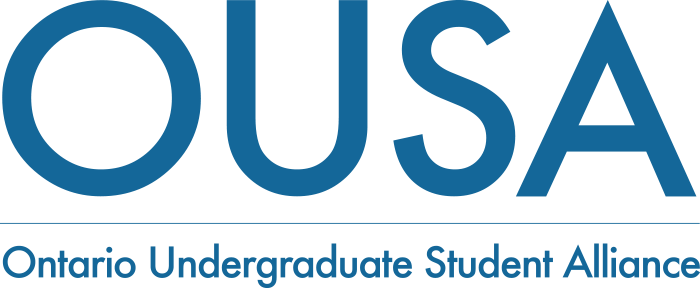Authors
- Mahtab Laghaei (she/her)
André Côté (he/him)
Noah Morris (he/him)
Publication

September 2024

1
Youjin Choi and Feng Hou, “A Comparison of Postsecondary Enrolment Trends between Domestic and International Students by Field of Study,” Economic and Social Reports, Statistics Canada, September 27, 2023, https://doi.org/10.25318/36280001202300900003-eng.
2
Office of the Auditor General of Ontario, Value-for-Money Audit: Public Colleges Oversight (Toronto: Office of the Auditor General of Ontario, December 2021), 1, https://www.auditor.on.ca/en/content/annualreports/arreports/en21/AR_PublicColleges_en21.pdf.
3
Statistics Canada, “Table 37-10-0086-01: Postsecondary Enrolments, by Institution Type, Registration Status, Province and Sex,” November 22, 2023, https://www150.statcan.gc.ca/t1/tbl1/en/tv.action?pid=3710008601.
4
Matthew Halliday, “The Murky World of Unregulated International Student Recruiters,” University Affairs, November 2, 2022, https://universityaffairs.ca/features/feature-article/the-murky-world-of-unregulated-international-student-recruiters/.
5
Peter Zimonjic, “Marc Miller Says International Students Are Being Unfairly Stigmatized,” CBC News, September 9, 2023, https://www.cbc.ca/news/politics/marc-miller-international-students-stigmatization-1.6959645.
6
Bryan Passifiume, “Record Number of International Students Straining Canada’s Housing Supply: Report,” National Post, August 11, 2023, https://nationalpost.com/news/canada/record-international-students-straining-housing-supply.
7
Canada, Global Affairs. “ARCHIVED – Canada’s International Education Strategy (2014-2019).” GAC, May 21, 2019. https://www.international.gc.ca/education/report-rapport/strategy-strategie-2014/index.aspx?lang=eng.
8
Office of the Auditor General of Ontario, Public Colleges Oversight, 1.
9
Alan Harrison (2023), Ensuring Financial Sustainability for Ontario’s Postsecondary Sector, Blue-Ribbon Panel on Postsecondary Education Financial Sustainability, November 14, 2023, https://files.ontario.ca/mcu-ensuring-financial-sustainability-for-ontarios-postsecondary-sector-en-2023-11-14.pdf.
10
Alex Usher, Janet Balfour . (2023). The State of Postsecondary Education in Canada, 2023. Toronto: Higher Education Strategy Associates.
11
See the text of the IRCC announcement here.
12
Government of Ontario, “Ontario Investing Nearly $1.3 Billion to Stabilize Colleges and Universities,” Ontario Newsroom, February 26, 2024, https://news.ontario.ca/en/release/1004227/ontario-investing-nearly-13-billion-to-stabilize-colleges-and-universities.
13
For more information, see: Government of Ontario, “Apply for Status as a Designated Learning Institution,” Ontario.ca, accessed August 23, 2024, https://www.ontario.ca/page/apply-status-designated-learning-institution.
14
Government of Ontario, “Advertising Rules for Career Colleges,” Ontario.ca, accessed August 23, 2024, https://www.ontario.ca/page/advertising-rules-career-colleges#section-3.
15
See, for example: Kathy Tomlinson, “The Foreign Students Who Say They Were Lured to Canada by a Lie,” The Globe and Mail, June 26, 2019, https://www.theglobeandmail.com/canada/article-international-students-coming-to-private-colleges-say-they-were-duped/.
16
Naomi Alboim, Karen Cohl, and Marshia Akbar, “Ontario Colleges and International Students: A Pivotal Time,” Policy Brief 18 (Toronto Metropolitan University, February 2024), 5, https://www.torontomu.ca/cerc-migration/Policy/CERCMigration_PolicyBrief18_FEB2024.pdf.
17
Manitoba Education and Early Childhood Learning, “Code of Practice and Conduct Regulation,” Government of Manitoba, https://www.edu.gov.mb.ca/ie/pdf/code_of_practice.pdf.
18
ICEF Monitor, “Australia Expands Regulatory Oversight of Education Agents and Announces New Integrity Measures for VET,” last modified October 2023, https://monitor.icef.com/2023/10/australia-expands-regulatory-oversight-of-education-agents-and-announces-new-integrity-measures-for-vet/.
19
BUILA, “A Partnership for Quality: UK Quality Framework for Education Agents,” https://www.buila.ac.uk/activities/a-partnership-for-quality-uk-quality-framework-for-education-agents-2.
20
Marshia Akbar, “Challenges Facing International College Students in Canada,” in India Migration Report 2023: Student Migration, ed. S. Irudaya Rajan (Routledge, 2024), 156, https://doi.org/10.4324/9781003490234-7.
21
J. Colyar, J. Pichette, and J. Deakin, Matching Rapid Growth with Adequate Supports: How Colleges and Government Can Enhance International Student Experiences in Ontario (Toronto: Higher Education Quality Council of Ontario, 2023.
22
Adam McGregor, Christina Decarie, Wendy Whitehead, and Shelley Aylesworth-Spink, “Supporting International Students in an Ontario College: A Case for Multiple Interventions,” The Canadian Journal of Action Research 22, no. 2 (2022): 5-28.
23
The University of British Columbia, “Basics of the University Budget,” accessed July 24, 2024, https://consultations.students.ubc.ca/basics-of-the-university-budget/.
24
See, for example, this thread on Reddit: https://www.reddit.com/r/india/comments/171eub6/scared_about_going_to_canada_for_my_further/.
25
Nicholas Keung, “With Dipping Study Permit Approval Rates for International Students, Canada May Not Meet Its Reduced Immigration Targets,” Toronto Star, June 19, 2024, last updated July 9, 2024, https://www.thestar.com/news/canada/with-dipping-study-permit-approval-rates-for-international-students-canada-may-not-meet-its-reduced/article_eb23c5ac-2e64-11ef-b4b6-6387aa4cb2c1.html.